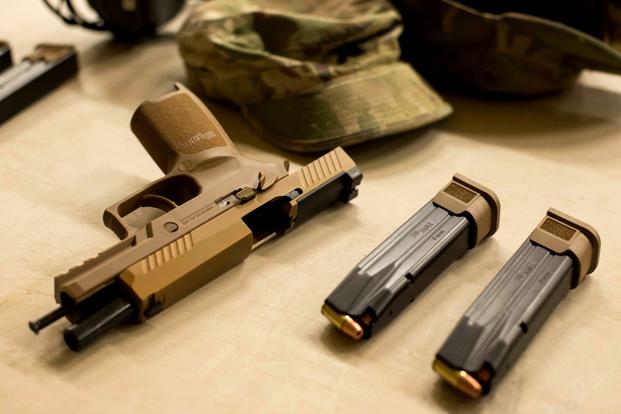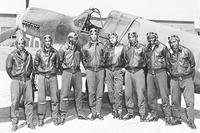U.S. Army weapons officials today explained the service's recent decision to dual-arm more soldiers in combat units with the service's new Modular Handgun System in addition to the M4 carbine.
Earlier this week, soldiers from the 101st Airborne Division (Air Assault) at Fort Campbell, Kentucky became the first Army unit to receive the MHS, which comes in two versions -- the XM17 full-size MHS and the XM18 compact MHS. Once the Army type-classifies the MHS, they will go by M17 and M18.
The MHS is designed to provide soldiers with more of an offensive weapon than the Cold-War era M9 pistol it is replacing, according to Daryl Eastlick, the deputy of the Lethality Branch at the Maneuver Center of Excellence at Fort Benning, Georgia.
"We wanted to find a weapon system that was available as a non-developmental item that fit a more offensive capability, meaning I want to be able to take the fight to the enemy when I field this to those individuals that their job in the infantry is to close with and destroy the enemy in close combat," Eastlick told a group of defense reporters at Fort Belvoir, Virginia.
The Army awarded Sig Sauer a contract worth up to $580 million Jan. 19. Sig Sauer beat out Glock Inc., FN America and Beretta USA, maker of the current M9 9mm service pistol, in the competition for the Modular Handgun System, or MHS, program.
The 101st received more than 2,000 MHSs on Nov. 17 and plan to field the new pistols over the next year. The unit fielding the MHS on Monday with a significant shift in policy that will issue the XM17 to squad leaders and team leaders to carry along with their M4 carbines. In the past, these junior leaders have not typically carried sidearms.
Special operations forces such as the 75th Ranger Regiment dual-arm all of its members with a pistol and a carbine, Eastlick said.
Army weapons officials have decided that "we did not want to dual arm the entire Army," Eastlick said. "We looked at those forces that close with and destroy the enemy in close combat as their primary function.
"We did some basis of issue drills where we looked at dual arming the entire infantry particularly dismounted infantry soldiers, engineers, scouts, and what we concluded was the 75th Ranger Regiment -- being the premiere infantry regiment in the world -- they also have a different training regimen than the big Army infantry battalions do."
First Lt. Andrew Borer of 101st Airborne's C Company, 1st Battalion, 506th Infantry Regiment, said he didn't think it was necessary to arm every soldier in the squad with a pistol alongside their individual weapons.
"There is no real need for us to dual arm the basic rifleman, but having our team leaders armed with both the XM17 and the M4 allows them to better control their teams ... where ever the fight takes them, said Borer, who telephoned into the roundtable from Fort Campbell.
Arming combat units down to the team-leader level will help bring the MHS into the squad, Eastlick said.
"When I need to go into a confined space, negotiate some battlefield task where one of my hands is busy, I need something I can engage the enemy with with one hand," Eastlick said.
Cpl. Jory Herrmann, a team leader with C Company, 1-506th, said he is pleased that he will have a more compact weapon for times he has to operate in cramped conditions.
"It's more useful to have a handgun on your side than a rifle trying to low crawl under tight quarters," Herrmann said by phone. "I think it is going to add a whole new dynamic to close quarters combat."
-- Matthew Cox can be reached at matthew.cox@military.com.













